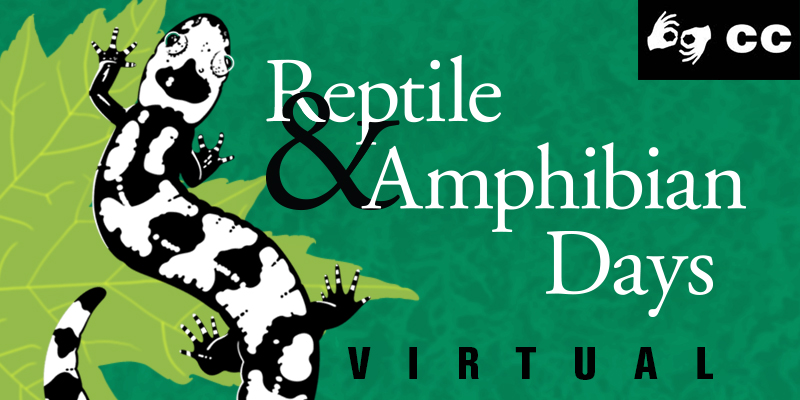Celebrate salamanders and more during virtual Reptile and Amphibian Days, March 8-13
For immediate release ‐ March 01, 2021
Contact: Jon Pishney, 919.707.8083. Images available upon request

[RALEIGH, N.C.] — Forget the Tar Heels and Wolfpack. North Carolina is the salamander state! With 64 distinct species of salamander, we have more than any other state in the country, and are one of the most salamander-rich areas in the world.
Join educators and scientists from the North Carolina Museum of Natural Sciences, along with several special guests, to celebrate the 26th annual Reptile and Amphibian Days, the nation’s largest and most popular event dedicated to hopping, slithering and crawling critters! This year’s event, held March 8–13, puts the spotlight on salamanders and includes six days of virtual programming, from kids’ crafts to presentations to close encounters of the herpetological kind! The event is perfect for all ages — from the youngest tadpoles to the oldest tortoises.
Reptile and Amphibian Days program highlights include:
- “Snakes of Raleigh” — Do snakes have bones? What do snakes eat? What should you do if you see a snake? Join us to learn what you can do to attract or deter snakes from living in your yard and how to identify the most commonly seen snakes in Raleigh, NC.
- “Frog Songs of NC” — Warmer temperatures are bringing out the frogs. Tune in to find out how to identify them by their calls.
- “Window on Animal Health Live!” — Join our veterinary staff LIVE, virtually, at the Museum’s Window on Animal Health as they perform checkups and wellness exams on our beautiful emerald tree boas!
- “Science Tonight: Tortoises” — Meet Amanda Hipps, a wildlife biologist and science communicator who has conducted research and helped people appreciate the importance and value of conserving landscapes, from Madagascar to Florida.
- “Salamander Stories” — From struggling student to passionate wildlife biologist, hear how Kabryn Mattison’s life journey changed when she discovered the wonder of salamanders. Learn about special species from NC and why they matter.
What’s so special about salamanders? First, they are often considered the environmental version of “the canary in the coal mine” because their moist, permeable skin makes them susceptible to small changes in habitat quality. They are also in the middle of the food chain; they are prey to a variety of species and predators of many others. Anything that disturbs their prey or their predators is reflected in the salamander population, making them useful indicators of overall ecosystem health.
Visit naturalsciences.org for more information and to register for programs that pique your interest.
About the NC Museum of Natural Sciences
The North Carolina Museum of Natural Sciences in downtown Raleigh (11 and 121 W. Jones St.) is an active research institution that engages visitors of every age and stage of learning in the wonders of science and the natural world. In addition to two downtown buildings showcasing seven floors of world-class exhibits, the Museum runs Prairie Ridge Ecostation, a 45-acre outdoor education and research facility in west Raleigh, as well as satellite facilities in Whiteville, Greenville and Grifton (Contentnea Creek). As a whole, our mission is “to illuminate the natural world and inspire its conservation.” Downtown Raleigh Hours: Tuesday–Sunday, 10 a.m.–4 p.m. General admission is free. For more information, visit www.naturalsciences.org.

